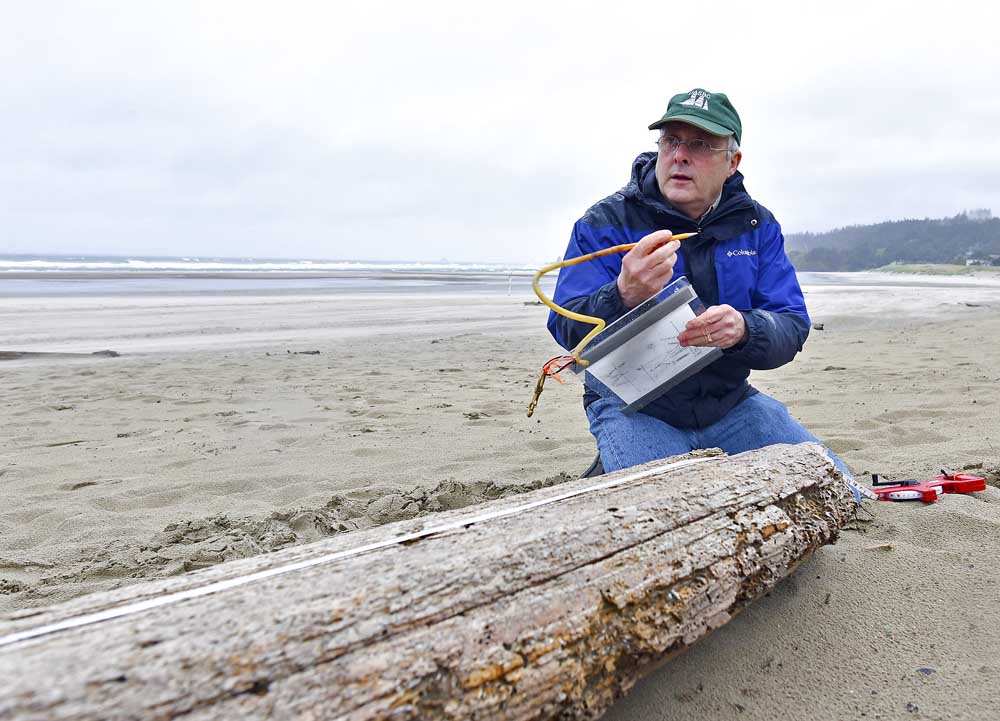Possible shipwreck debris uncovered in Cannon Beach
Published 4:30 am Wednesday, June 21, 2017

- Christopher Dewey with the Maritime Archaeological Society takes measurements of a wooden beam discovered near Cannon Beach recently by a Portland man.
CANNON BEACH — What at first glance looks like one of the many logs that line Cannon Beach may be an uncovered keel of a boat from a possible shipwreck.
The wood object, which measures about 18 feet long and several hundred pounds, was found Wednesday afternoon on the beach close to the Taft Street access by Jeffrey Smith of Portland. Looking for a place to rest after walking with his wife, he noticed rusty square nails, notches and square cutouts in the log and decided to call the Cannon Beach History Center and Museum.
“Maybe this isn’t a big deal, but when you look at the square nails and the cutouts, it looks like this is from a very old ship,” Smith said.
After Elaine Trucke, the museum’s director, came out to take a look, she called the Columbia River Maritime Museum and Christopher Dewey from the Maritime Archaeological Society to help identify the object.
“Looking at the parts makes me think it could be from the mid-1800s, but I’m not an expert,” Trucke said. “In general shipwrecks are pretty common on the coast, but if it were actually that old it would be a rare situation.”
The wood is some variety of old growth timber, Dewey said, which would make the object historically significant.
But defining the age and exact nature of the wood will require an evaluation from the state archaeologist’s office in Salem, Dewey said. Without a thorough examination, the object could be anything from a structural part of a ship to debris still washing ashore from the tsunami in Japan in 2011.
Dewey, an anthropology and archaeology adjunct instructor at Clatsop Community College who specializes in investigating shipwrecks, said there are many ways to determine age. Some methods include looking at different types of fastening, machinery cuts and analyzing wood samples to see if the species is local or from somewhere around the world. “The fact that it’s washed up onto the beach, it means it could be from anywhere on the coast,” Dewey said. “Trying to find a record of a ship that matches this piece of wood from a wreck would be difficult.”
Shipwrecks are not uncommon along the Oregon Coast. Three men using metal detectors in the dunes uncovered a large piece of wood in 2014 that turned out to be a 1950s trawler, and a 21-foot keel turned up in the dunes at Seaside in 2015.
Ultimately, the state will determine what to do with the object and whether or not it is valuable enough to move and conserve. With the closest conservation lab in Texas, Dewey said, transportation and conservation costs would climb for an object so large and heavy.
“This is significant,” he said. “This could be many things, but it’s still really cool for anyone interested in underwater archaeology.”





